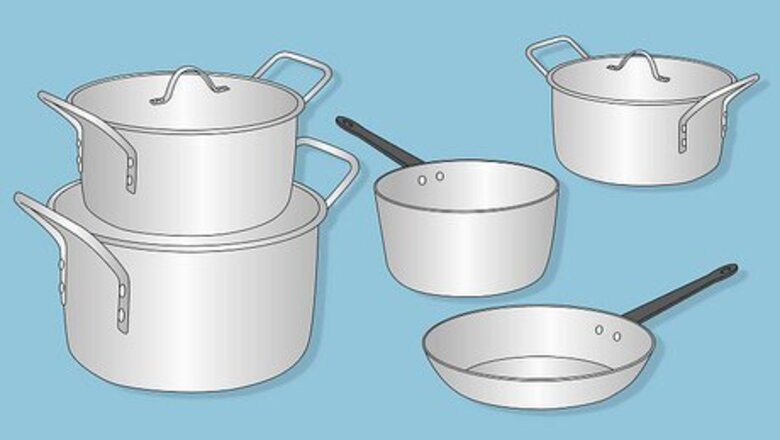
views
- Aluminum cookware isn’t considered to be harmful, however, the long-term effects of consuming aluminum aren’t known and some recommend avoiding it.
- Aluminum exposure can be harmful to those with kidney problems, the elderly, and children. Cookware from outside the U.S. might also contain other harmful metals.
- The safest alternatives include stainless steel, ceramic, and cast iron. Anodized aluminum might also be a safer option than uncoated aluminum cookware.
Is aluminum cookware safe?

Aluminum cookware isn’t toxic, but some experts advise not to use it. The aluminum you might consume from cookware is typically a small amount that’s safe for most people and quickly leaves the body through your urine. However, the long-term health effects of consuming aluminum aren’t entirely known and some experts recommend minimizing your daily intake as much as possible. The average adult in the U.S. eats about 7 to 9 mg of aluminum per day from other sources like processed food, drinking water, and medicinal products like antacids and aspirin. Aluminum pots and pans only make up 1 to 2 mg of that total.
Potential Risks of Aluminum Cookware

Aluminum exposure may be harmful for those with kidney problems. Aluminum is typically filtered out of your body through your kidneys, so those with weakened kidney function may not be able to filter out the metal fast enough. Those with kidney diseases may also develop other bone or brain diseases that may be caused by high levels of aluminum.

High aluminum levels might harm your nervous system and bones. Aluminum can enter the brain through your blood, which might cause severe health problems for infants and elderly people. Prolonged exposure to high levels of aluminum might also contribute to conditions like anemia, soft bone disease, and osteoporosis. One review found that antacids containing aluminum can cause calcium loss and interrupt the intestinal absorption of fluoride, which might contribute to bone loss for patients with osteoporosis. One study suggests that people who use aluminum utensils and containers may have higher levels of aluminum in their blood, leading to an increase of free radicals in their bodies.

Cookware outside the United States may contain harmful amounts of lead. One investigation into the elevated lead levels in refugee children found that the aluminum cookware they took into the U.S. contained high amounts of lead. The importation of cookware with any level of lead is prohibited in the U.S. However, some imported cookware may still contain this metal. Another study found that aluminum and copper cookware in developing nations may be highly contaminated with lead. Lead can lead to adverse effects in children, such as damage to the brain and nervous system, slowed growth and development, and learning and behavior problems.
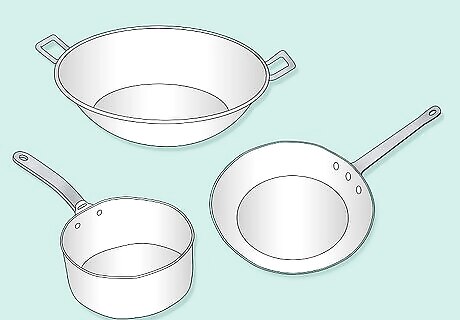
Aluminum cookware may tarnish or cause acidic foods to taste metallic. Aluminum pots and pans can tarnish, dent, or warp easily. Because of leached aluminum, cooking with uncoated aluminum cookware may also add a subtle metallic taste to highly acidic food like tomatoes. Aluminum also heats up quickly and can superheat in areas that are in direct contact with the burner. This may cause your food to cook unevenly.
Does aluminum cookware increase your risk of Alzheimer’s disease?

It’s not proven that aluminum increases your risk of Alzheimer’s disease. Some studies have shown that people exposed to high levels of aluminum may develop the disease, but other studies have found this to be false. So far, there haven’t been any consistent findings to support either side of this controversial theory. Researchers who have found that aluminum contributes to the development of Alzheimer’s disease recommend minimizing your exposure as much as possible.
Benefits of Aluminum Cookware

Aluminum cookware is lightweight and versatile. Aluminum cookware is easy to carry and handle, which can make it perfect for everyday use. It’s also usable for a variety of cooking methods, from frying to boiling and baking, and can be used on stovetops, in ovens, and on grills. Aluminum might not be as durable as a material like cast iron, however, many pots and pans are coated with nonstick or anodized surfaces to make them last longer and prevent corrosion.

Aluminum pots and pans can be more affordable than other materials. This is mostly because aluminum is an abundant metal that can be cheap to commercially extract from ores. Aluminum is also recyclable and highly sustainable when reused. On the flip side, a more expensive high-quality cookware might be a more long-term investment since you may not need to replace it as often.
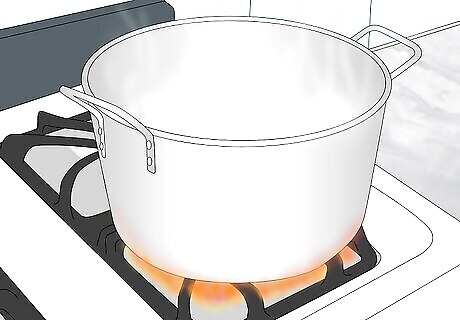
Aluminum cookware may heat up faster than other metals. Aluminum heats faster than cast iron or stainless steel, and can evenly distribute heat. Stainless steel, in particular, is a poor heat conductor, which is why there’s usually an aluminum layer in stainless steel pans. High-end pans are made with a copper core instead of an aluminum one because copper is an even better heat conductor than aluminum.
Using Aluminum Cookware Safely

Avoid cooking acidic foods, like tomatoes, in uncoated aluminum pans. Aluminum may be highly reactive with acidic foods like tomatoes, vinegar, alcohol, and citrus juice, causing aluminum to leach into the food. Leafy vegetables might also absorb more aluminum than other foods. Simmering tomato sauce in an aluminum pot might leach the most aluminum because it’s acidic, salty, liquidy, and spends a long time in the vessel. In comparison, cookies on an aluminum sheet extract less aluminum because they’re drier, less acidic, less salty, make less physical contact with the metal, and spend less time cooking. If you do use uncoated aluminum cookware, look for high-quality brands that source their material from pure aluminum to reduce your intake of potentially dangerous metals.

Cook food in aluminum cookware at lower temperatures. Over time, high temperatures may peel off the nonstick coating, which can lead to metal leaching. Instead, cook your food at medium heat and try to avoid any drastic or sudden temperature changes. If you need to use high heat to cook something, try using a cast iron pan instead.

Get rid of aluminum cookware with scratches in the coating. Scratches in the coating of aluminum pans can increase your exposure to aluminum and other toxins. Try to avoid cooking in scratched aluminum cookware and dispose of them when you notice scratches. To prevent scratching, use wooden or silicone utensils instead of metal ones. Use a gentle brush and warm water to clean your pans, not steel wool. Try to avoid washing with hot water, which can cause oxidation on aluminum pans.

Store aluminum alloy pans when they’re clean and dry. Aluminum cookware doesn’t rust like iron or other materials. However, it may contain other metals that are prone to corrosion. Make sure your aluminum cookware is completely dried off before putting it away to prevent rust. Aluminum cookware is generally not safe to put in the dishwasher or soak in soapy water for long periods because the high temperature can cause it to fade and oxidize quickly. Try to avoid stacking nonstick aluminum pans—they may scratch each other. If you need to stack them, put a pot holder, dish towel, or paper towel between the pans to protect them.
Health-Safe Cookware Alternatives

Anodized aluminum cookware Anodizing means oxidizing the outer layer of the aluminum, which can make your cookware tougher, more resistant to scratching, and more nonstick than bare aluminum. This also may make the aluminum less likely to react with acidic foods, preventing the metal from leaching into your dinner. This means anodized aluminum cookware has a layer of aluminum oxide on the surface of the metal, which can make the material more durable and rust-resistant. The downside: At super high heat levels, the anodized surface can break down. It also doesn’t have as long of a lifespan as stainless steel or cast iron cookware. When you buy a new pot or pan, look for ones marked “PTFE-” and “PFOA-free.” These chemicals have been linked to health risks and may stay in your body for months to years.
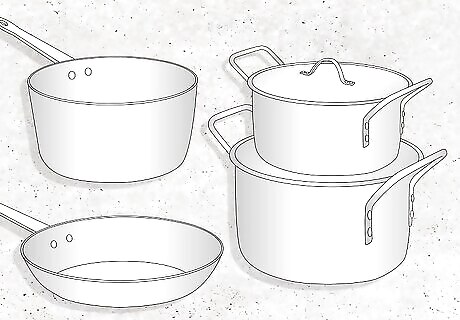
Stainless steel cookware Uncoated stainless steel is one of the best cookware materials because it’s durable, easy to care for, and doesn’t react with foods. Thanks to an aluminum or copper layer, it also heats quickly and uniformly. Depending on the material of the handles, most stainless steel pots and pans are also dishwasher-, oven-, and boiler-safe. The downside: Uncoated stainless steel may be more difficult to clean than other materials.
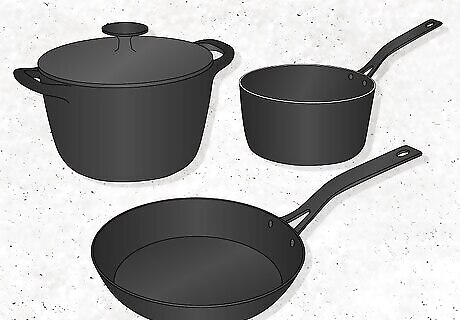
Cast iron pans and other cookware Cast iron can be a durable alternative to other non-stick cooking surfaces and is the best material for cooking on high heat. Because they can stand higher heat than other materials, cast iron pans can be easily moved from the stovetop to the oven to continue cooking. The downside: Cast iron pans have to be seasoned (rubbed with oil) regularly to maintain their nonstick surface and avoid rusting. They’re also not dishwasher-safe.
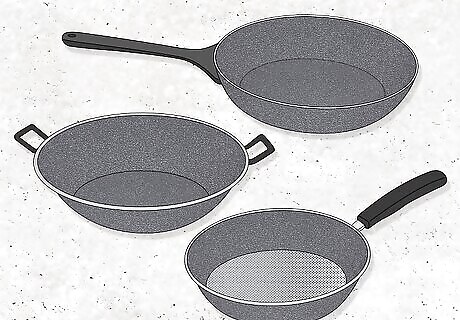
Aluminum cookware with a nonstick or ceramic coating Nonstick surfaces have a PTFE (Teflon) layer that can create a layer between the metal and your food. However, because of health concerns, ceramic-coated cookware may be a better option. Ceramic cookware is naturally stick-resistant and can handle higher temperatures than other nonstick pans. PFOA, a chemical used in the manufacturing of nonstick cookware like Teflon (PTFE), has been associated with cancer and developmental problems. However, it hasn’t been made in the U.S. since 2015. The downside: Ceramic cookware doesn’t last as long as PTFE cookware and is not dishwasher-safe.

Cast aluminum cookware Cast aluminum cookware has a thick base and thinner sidewalls. They’re usually lighter than cast iron, but they usually can be seasoned in the same way. To season cast aluminum, heat the pan to a high temperature, then add vegetable oil. Wait until it smokes, then remove it from heat and rub the oil with a paper towel. The downside: Like regular aluminum cookware, cast aluminum can warp in high heat and may scratch more easily than cast iron or other materials.

Copper cookware Copper pots and pans are usually the most expensive option due to high demand and limited supply. They’re also usually handcrafted and hammered. Copper cookware warms up quickly, spreads heat evenly, cools faster than cast iron, and helps with cooking delicate foods like savory sauces and caramel. Copper is also naturally antimicrobial, which means germs and bacteria don’t survive on the surface. The downside: It’s reactive with acidic foods and can leave dishes with a slightly metallic taste. Copper also requires regular polishing and maintenance. To make the copper less reactive, look for cookware with a stainless steel or tin lining.
















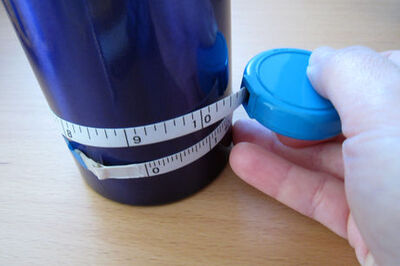

Comments
0 comment